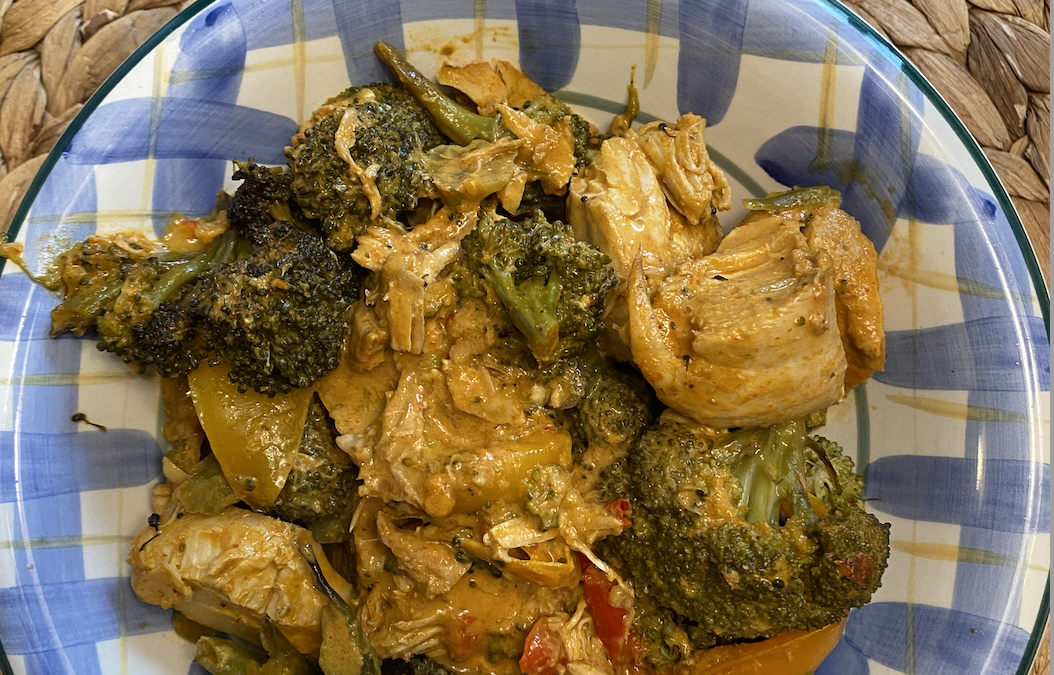
by Dr. Talia Marcheggiani, ND | Nov 30, 2021 | Cooking, Digestion, Elimination Diet, Food, Food Sensitivities, Gluten Free, Ketogenic Diet, metabolic health, Microbiome, Nutrition, Paleo, Recipes
You know how you just want the recipe and yet you have to scroll through someone’s long story about their cat and their grandma and a blistery winter day?
Forget all that. I made this curry.
Here’s the recipe (you’re welcome 😜 ):
Ingredients:
1 can coconut milk (full fat, Arroy-D)
2 heads broccoli, chop off the florets into small pieces
2 large bell peppers, chopped into slices
1/2 jar of Thai Kitchen red curry paste (nice, clean, delicious, free of seed oils 👍 )
4 large chicken breasts
Salt, pepper, olive oil.
Directions:
Preheat oven to 350 degrees (you can also do all this in the air fryer). Add chopped chicken breast to a baking pan, add broccoli and peppers, drizzle with olive oil. Cook for 45 minutes (or until everything is cooked).
In a large stir-fry pan, add cooked vegetables and chicken, add red curry paste and coconut milk.
You can serve on rice, but you don’t have to.
Filling, rich in protein and veggies. Delicious, warming. I love Thai curries on snowy days.
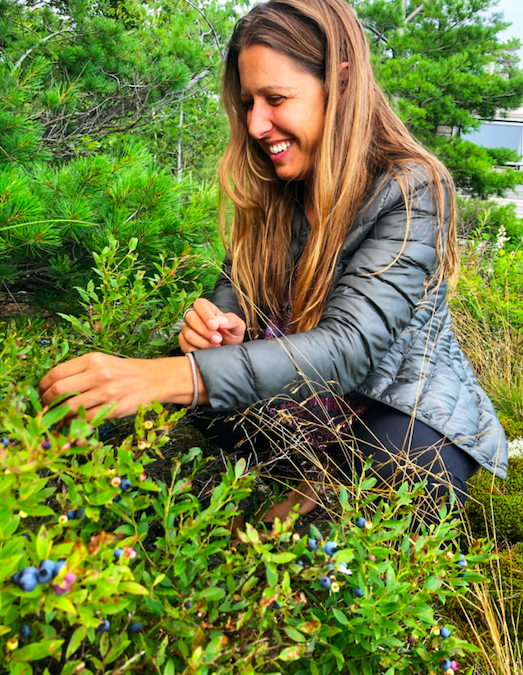
by Dr. Talia Marcheggiani, ND | Jun 30, 2021 | Cooking, Food, Health, Naturopathic Philosophy, Naturopathic Principles, Nutrition
It’s mulberry season, which means while walking through my neighbourhood I can snack, picking food right off the trees growing behind fences or on people’s front lawns whenever I walk by a berry-stained sidewalk.
There’s something therapeutic about entering into the flow state of berry-eating from a tree (or a bush? they’re massive bushes. The act of eating becomes a ritual. It demands presence and attention. It becomes like a game, the objective is looking for rich colour, ripeness, size, and strategizing how to access the delicious, prized morsel you’ve laid your eyes on, then savouring the experience of having attained it, before beginning the process again.
It’s impossible to binge-eat this way.
I remember at my friend’s cottage last Septemeber it was blueberry season and we spent the weekend casually hanging out in the middle of blueberry patches. I would find an abundant bush, settle down in the midst of it and graze. I must have eaten 5 cups of blueberries each day and yet it took me the entire day to do it.
What better way to spend a day?
The best part of it was: I met my food.
I was listening to Paul Saladino of the Fundamental Health Podcast interview Daniel Vitalis from the Rewilding Podcast. The subject came up about foraging, and hunting and meeting your food.
“Some people have never seen a bass,” Daniel Vitalis commented.
“Maybe not in the wild, maybe not in a zoo. They don’t know how big it is, what colour it is, what kind of lakes it lives in, what it looks like.
“And, more importantly, even if someone fishes for bass or knows what they look like, if they eat bass in a restaurant or from a frozen filet they’ve bought at the grocery store, they most likely haven’t met that bass.
“There’s a massive disconnect in our society between us and the food we eat.”
In almost every other culture we would have shared an intimate relationship with food.
When I was eating blueberries I took the time to settle down in a patch of bushes and linger. The act of eating was immersed in a ritualistic past-time. I was connecting with the specific plant whose food I was borrowing. I was visiting her home–her environment.
When you fish for bass, or hunt a deer, you enter that animal’s setting. You meet it alive. You witness it living. You witness it dying.
The animal’s fate intertwines with yours.
Your survival and his become like a seesaw. Yesterday it was your turn. Today it’s mine.
I suppose the fish filet’s fate is also intertwined with yours: he may have been destined to end up in the freezer section of the local Costco, but somehow… it seems radically different, largely impersonal. Colder.
This is why we obsess over food sometimes: where was the bass made? Was it caught or farmed? Is it organic? Where was it processed? Eating animals is wrong—I’m going to go vegan. And so on.
I believe that this neurosis becomes our remedy for disconnect, for the disembodiment we experience. Eating becomes an intellectual task. We need to read labels, visit websites, and do research, rather than just experiencing our food first in its living form, before engaging in the eating of it.
Hunter gatherers don’t read labels. They don’t diet.
The Hadza from Tanzania don’t have food rules, restrictions ,or even mental, nutritional concepts about food. That’s a Western thing.
The Hadza, like many other cultures more connected to their food sources, simply possess the raw biological desire to eat whatever and however much they like that they can get, whenever they can get it. They are guided by taste and hunger.
Their lives revolve around hunting and gathering food. They simply immerse themselves in their food environments and eat.
We are also immersed in a food environment: the packaged, fried, doctored foodstuffs packed into grocery stores, fast food restaurants, gas stations, and convenience stores. These foods connect with our hunger cues and communicate with our tastebuds but offer none of the impact of “real” food on our physiology. They don’t nourish us.
They don’t connect us to the natural world. They don’t encourage ritualistic eating. What happened to that wheat sheaf or corn blade for it to become refined flour or hydrogenated oil? Could I participate in the making of it? Or do I lack the chemicals and technology to process this food to make these potato chips, bread, or cookies?
Our food environment encourages our disconnect and this encourages our neurosis around food and nutrition. In order to thrive in this environment we need to think about food. We need to read labels and make choices and abstain from certain foods, and make an effort to change our environment so that it becomes one more conducive to human nourishment.
We need to refuse foods served to us at events, or buy separate groceries, and make separate meals for our partners or children.
We create a food “island” for ourselves, in the midst of our community.
And this becomes impossible.
You are only as healthy as the group and environment you find yourself in.
So what can we do? Perhaps we can start with community. Where do the healthy people shop? Where do you feel most connected to your food? Is it in your garden? Is it visiting a farm? Hunting or buying meat from a hunter, or a farm? Can you meet your meat before you buy it? Can you develop a relationship with those who grow or process your food?
Perhaps it means more at-home food preparation. Visiting more farmer’s markets. Talking with the people selling you your eggs. Perhaps it means developing a connection with a local farm where you source your food. Perhaps it means you pick your apples in season, or you grow your own herbs. Maybe you bake bread with your children, or can your own tomatoes.
Maybe you develop your own food and eating rituals and you practice them as a family or as a community.
Maybe you ask some questions about your food–what does this bass look like? How did this cow live?
Food has always been so central to human culture.
When we connect with the rituals of picking, hunting, growing, processing, and consuming our food, we learn what it is to be truly human.
When we meet our food, we meet ourselves.
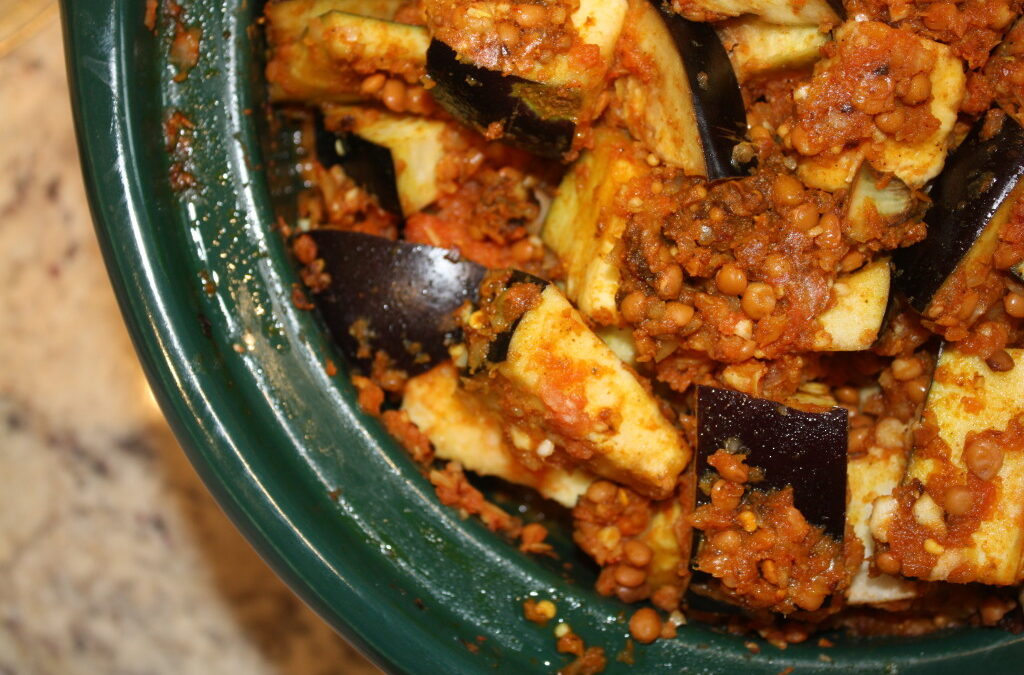
by Dr. Talia Marcheggiani, ND | Dec 10, 2014 | Asian Medicine, Ayurvedic Medicine, Cooking, Digestion, Food, Gluten Free, Nutrition, Recipes
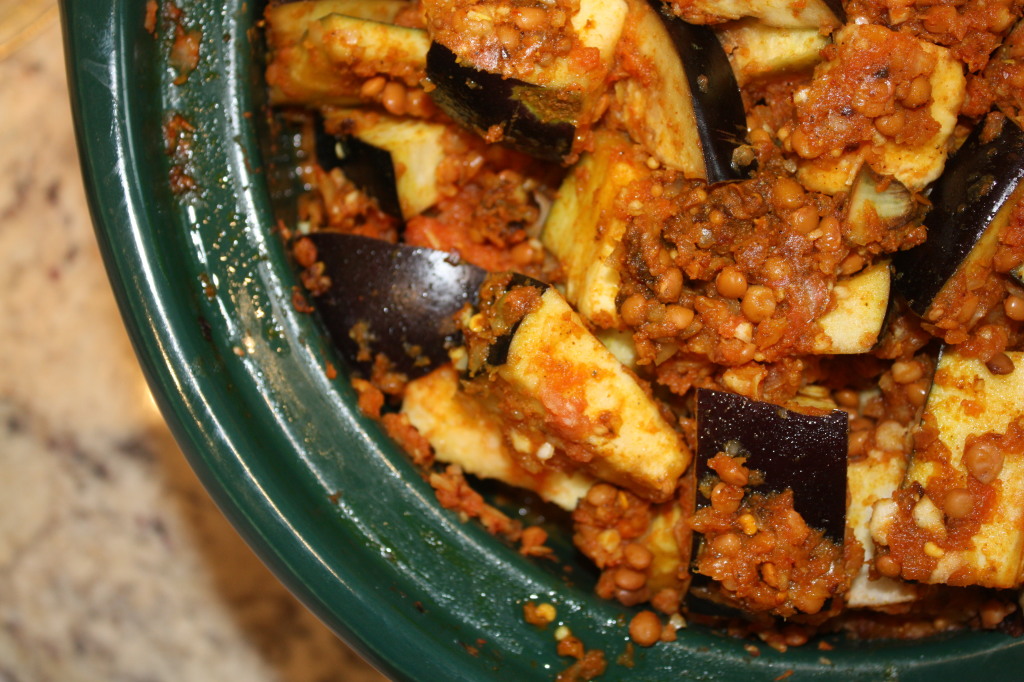
Finding the time and energy to cook during the winter can be tough. However, one of the best things you can do for your health (and wallet) is cook meals at home. Knowing a few slow cooker recipes is essential for getting through a cold, dry winter. Soups, stews and curries are warming and easy to digest; these healthy comfort foods help us feel energized and keep our immune systems strong. Slow cooking is a great way to prepare healthy, hearty meals while you watch the Mindy Project or spend the day working or hiking in the forest. This recipe makes a good amount of eggplant masala, which is perfect for leftovers and lunches. The meal is gluten free (if served with rice) and dairy free as well as vegan. It is high in healthy fibres, healthy fats (if cooked in coconut oil or avocado oil) and protein. The recipe is an adaptation from one I learned at a cooking class I took while traveling in Northern India.
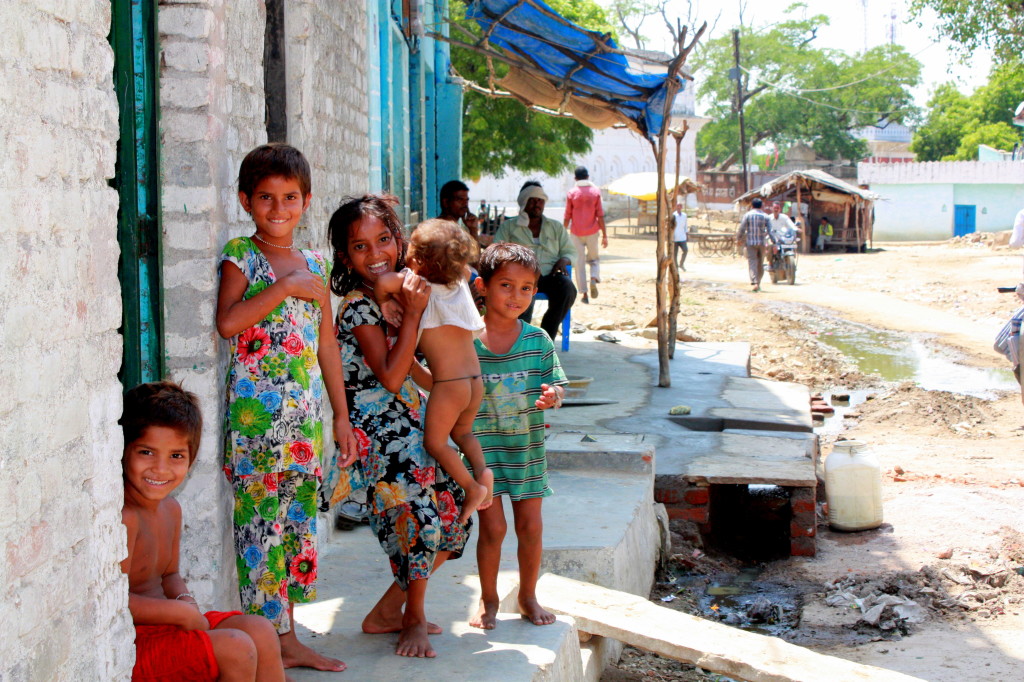
Eggplant Masala (from North India)
Ingredients:
4 medium-sized eggplants
4 large tomatoes (or a can of diced tomatoes)
3 white onions
10 cloves of garlic
1 can of chickpeas or lentils
5 tbs mustard oil, coconut oil or another heat-stable oil (I had avocado oil on hand)
4 tsp ground coriander
3 tsp ground turmeric
2 tsp red chilli peppers
1 tsp salt
1 tsp garam masala
1 tsp mustard seeds
1 tsp cumin seeds
1 tsp fenugreek seed (I couldn’t find fenugreek when I was in the grocery store, and my dog was waiting, tied outside, so I didn’t include it in this recipe. The recipe still tasted lush without it).
a blender, stove and slow-cooker (optional)
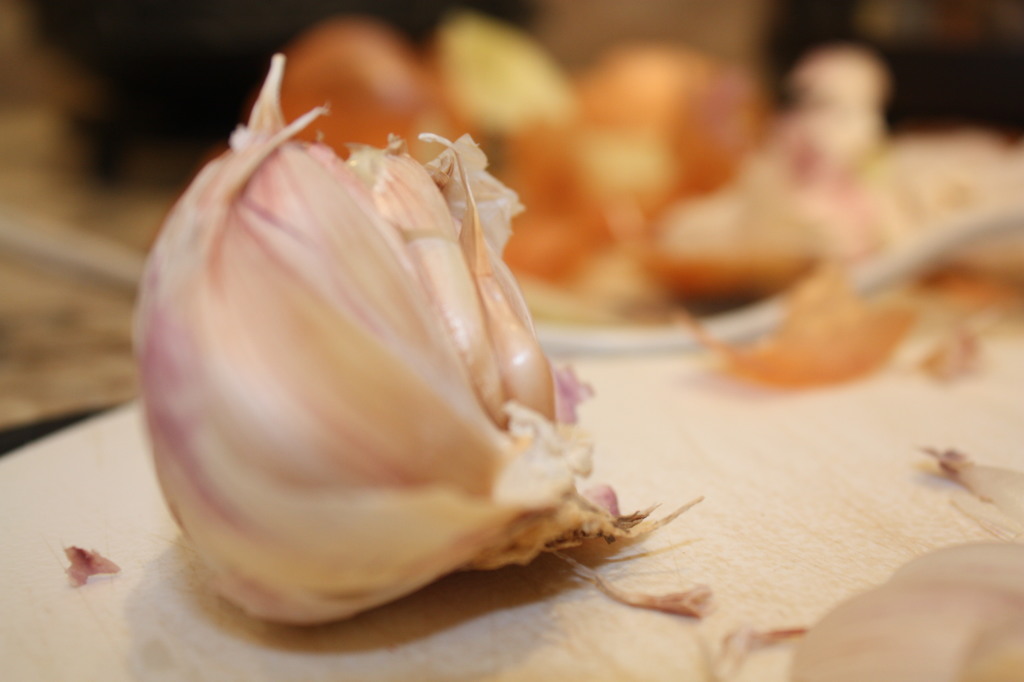
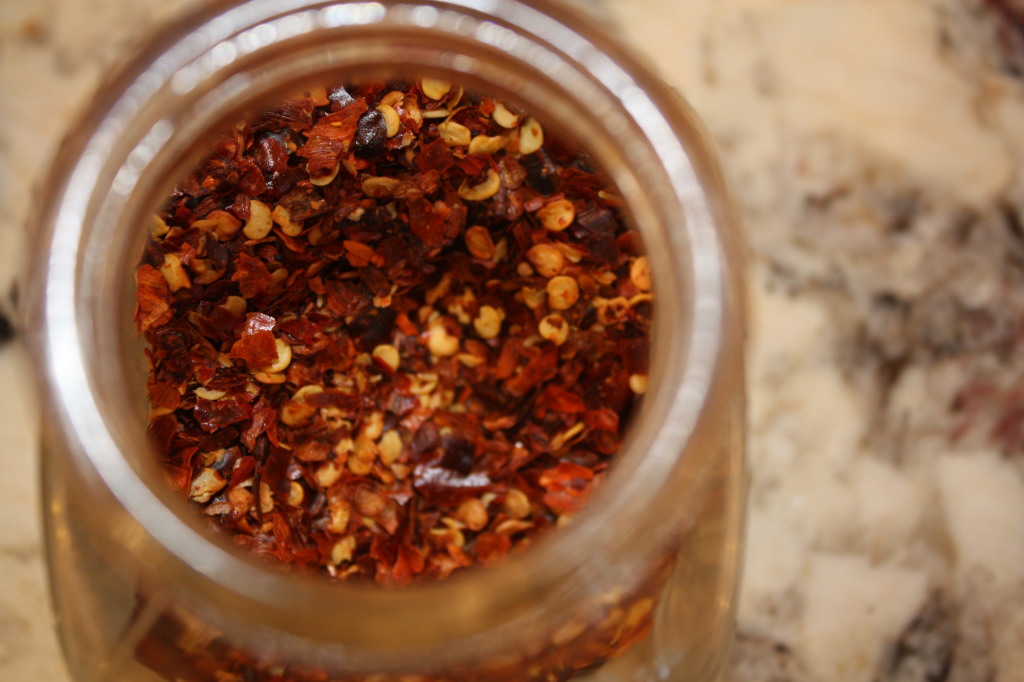
Directions:
Heat oil on medium heat, add in the spices to release the flavours.
Blend together tomatoes, onions and garlic. Chop eggplants into 1 inch squares.
Add all the ingredients – eggplants, oil + spices, and vegetable blend, including the lentils/chickpeas – to a slow-cooker and cook on low for 6 hours or on high for 4. Take a walk with your family, meet your friend for coffee, ride your bike, have a bubble bath or leave for work. Another option is cooking the ingredients on a covered pan over medium-high heat for 40 minutes to 1 hour, or until eggplants are soft.
When ready, serve over rice or with chapati or naan.
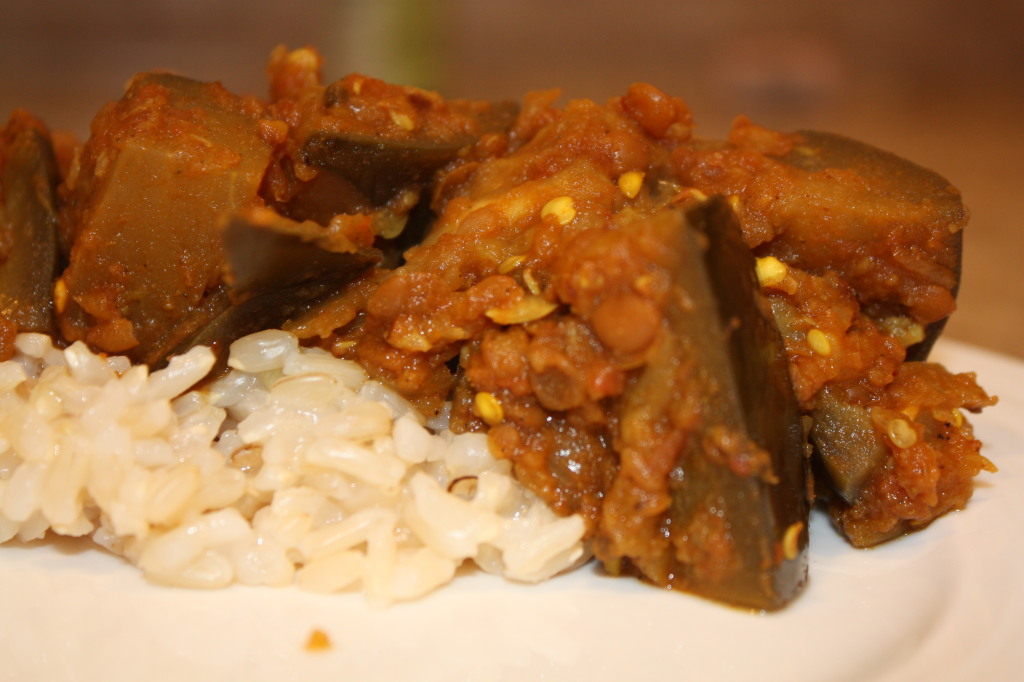
Enjoy!
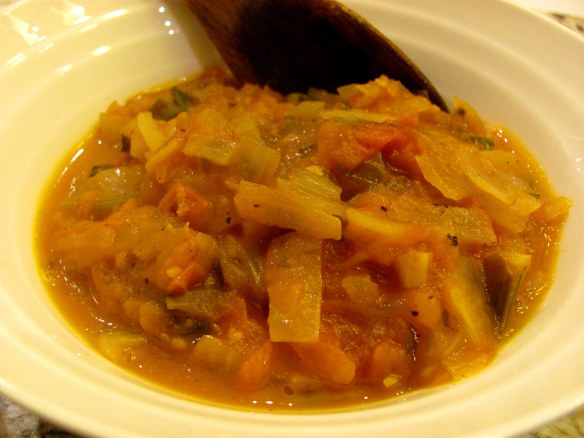
by Dr. Talia Marcheggiani, ND | Nov 19, 2013 | Colombia, Cooking, Food, Health, Nutrition, Recipes

Now that the first snowflakes are blowing our way here in Canada, I am missing the warmth of South America even more. Since vegetables in Colombia, South America are often hard to come by in traditional dishes, I often find myself piling on the “hogao”, a delicious vegetable salsa. I’ve since come to associate the taste with travelling, smiling friends and happy memories in the Andean sunshine. Here is a recipe for the delicious Colombian food staple that can be used as a dip for fried plantain, yucca, crackers or tortilla chips. It can also be used as a topping to meat, soups or sandwiches. (more…)
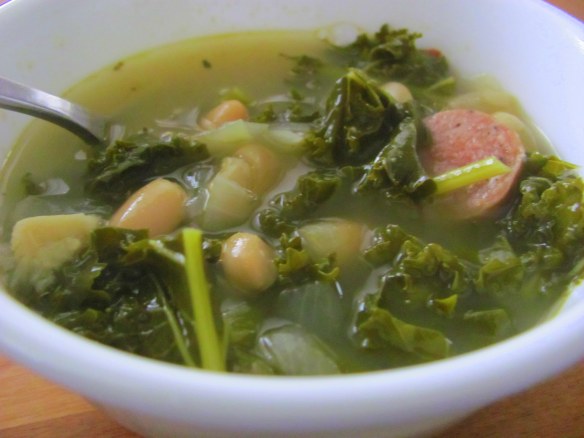
by Dr. Talia Marcheggiani, ND | Nov 15, 2013 | Cooking, Digestion, Food, Health, Nutrition, Recipes

There is nothing like a bowl of warm soup, with steaming vegetables, to help nurse the body through cold weather and a stressful season. Save the salads and cold wraps for summer and protect your immune and digestive system by indulging in easy-to-digest warming foods. This is a hearty soup with a healthy serving of protein and a decent helping of leafy greens. (more…)
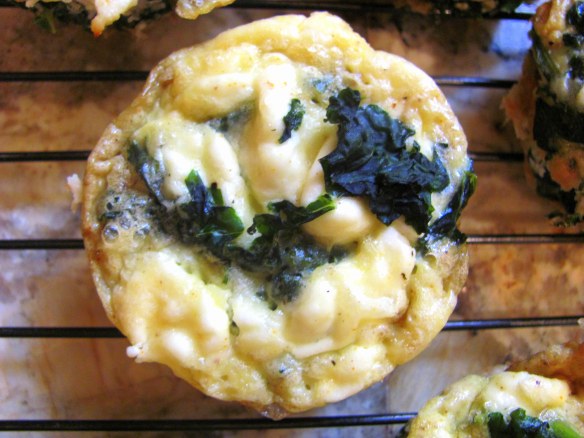
by Dr. Talia Marcheggiani, ND | Sep 3, 2013 | Cooking, Education, Food, Gluten Free, Health, Nutrition, Recipes, Student

Welcome back to school, everyone! Thankfully, being a 4th year intern, my days of sitting in lecture are over with for now. For the rest of you tireless scholars, I find that long days in class are made more bearable when I have something yummy and nutritious to nosh on. Just in case you’re bored of the old soup, sandwich, salad lunch rut, here is a new take on portable nutrition. This recipe is low-carb, high in protein and contains a serving of leafy greens. Kale is one of nature’s most perfect foods. Chock full of vitamins and minerals, this versatile leafy green can be added to anything that you used to add spinach or lettuce to: smoothies, salads, soups, sauces, steamed or sauteed on the side, or in this wonderful frittata recipe!
(more…)
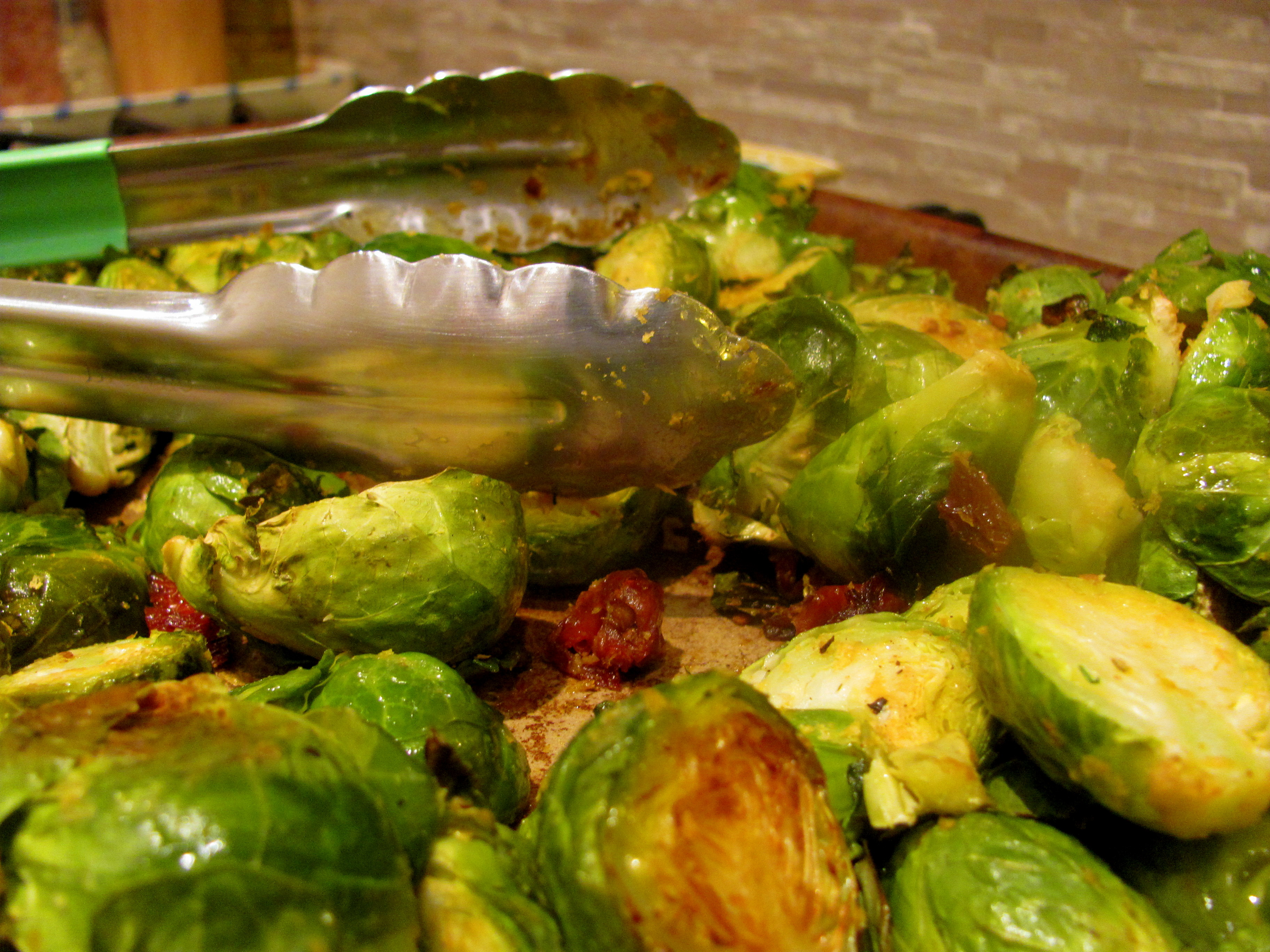
by Dr. Talia Marcheggiani, ND | Jul 2, 2013 | Cooking, Detoxification, Diet, Elimination Diet, Food, Food Sensitivities, Gluten Free, Health, Nutrition, Recipes

Brussel sprouts with morning coffee? Why not?
Its seems that, for most people, the hardest part of starting a new diet is figuring out what to eat for breakfast. To help some of my RSNC patients on the road to hypoallergenic, healthier living, I compiled this handout to give them some inspiration for the most important meal of the day. These breakfasts might be appropriate for some on the elimination diet, but since each diet is different, make sure you review the ingredients first to verify that the recipe fits your dietary needs.
(more…)
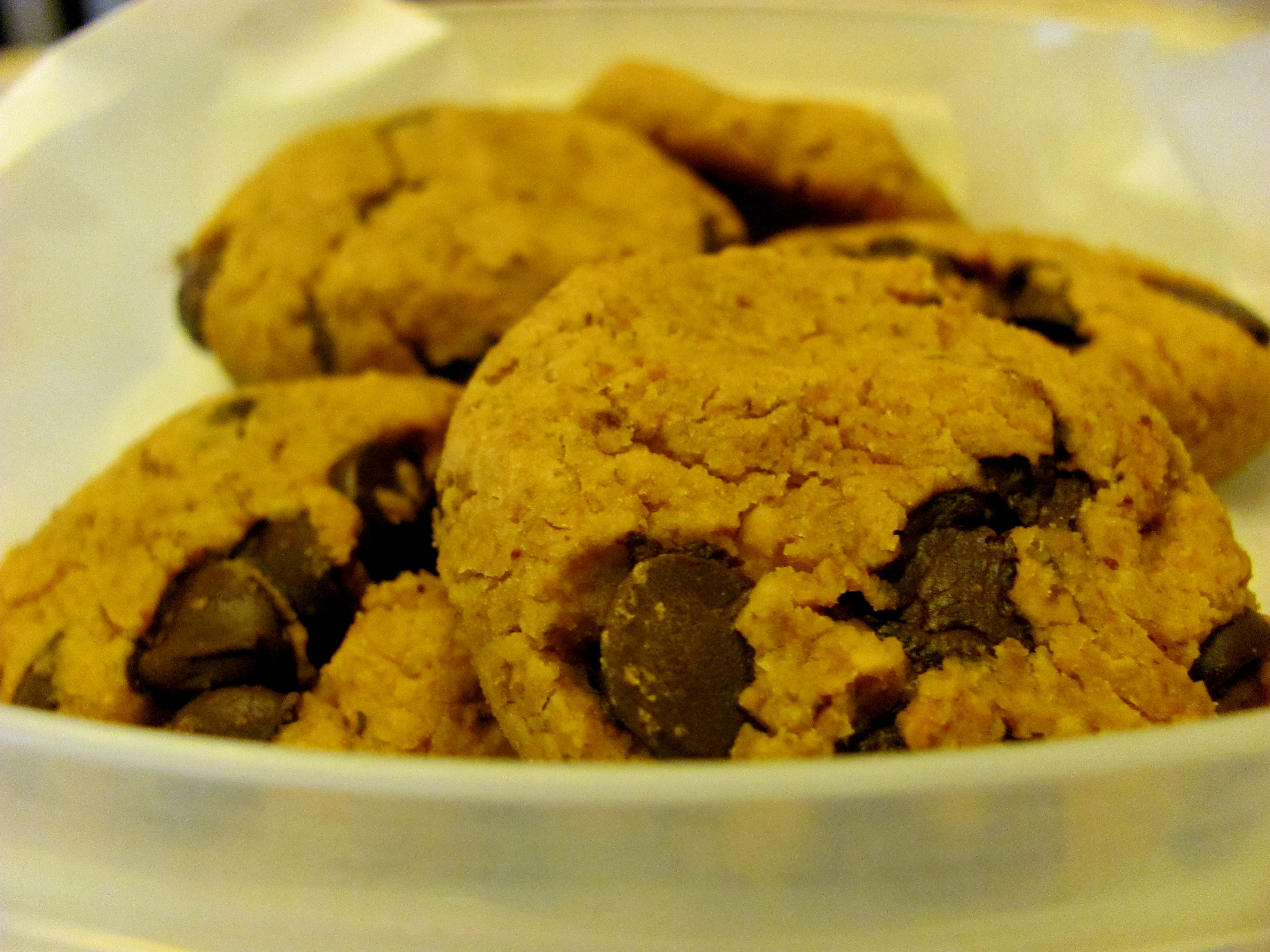
by Dr. Talia Marcheggiani, ND | Jun 19, 2013 | Cooking, Dessert, Diet, Digestion, Food, Food Sensitivities, Gluten Free, Healthy Baking, Nutrition

“Great cookies!” Someone exclaimed as I passed around the tupperware container. And, as is custom at the Canadian College of Naturopathic Medicine, home of the famous elimination diet, they added, “Are they gluten-free?”
Little did this particular colleague know, these cookies aren’t just gluten-free, they’re grain-free, dairy-free and egg-free. What’s the secret ingredient? It’s not almond flour, as most grain-free recipe experts might suspect, but chickpeas. Yeah. So, before you stop reading, just try them, they’re easy to make and you’ll be able to fool your friends (and maybe even yourself) too.
(more…)
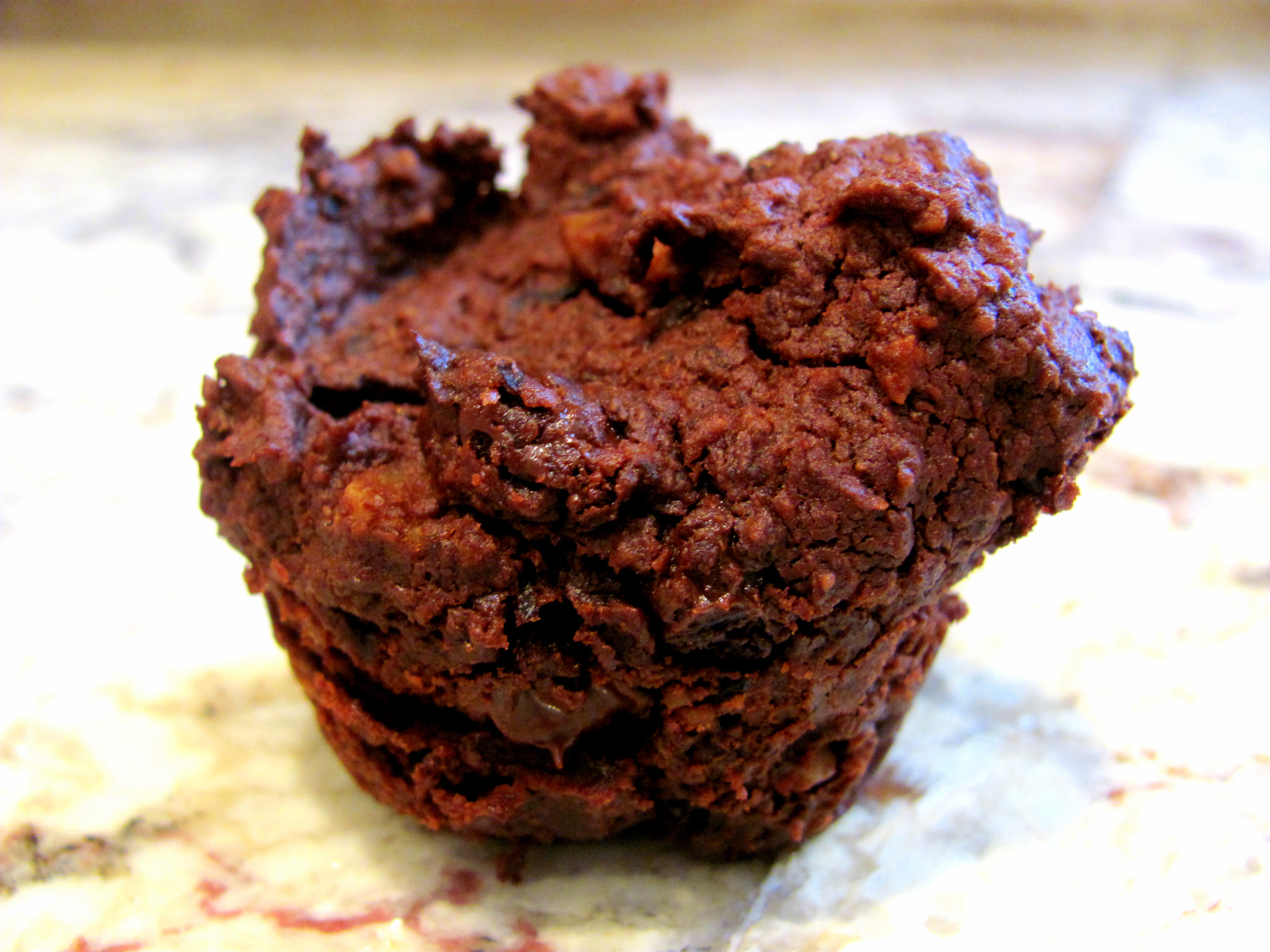
by Dr. Talia Marcheggiani, ND | Apr 23, 2013 | Cooking, Dessert, Diet, Digestion, Elimination Diet, Food, Food Sensitivities, Gluten Free, Healthy Baking, Nutrition, Recipes

So, you’ve probably heard of black bean brownies before. However, just like “therapist”, black bean brownie is not a protected title. There are just as many varieties of recipes as there are hits for “black bean brownie” on google. Some have flour, some barely contain beans, some are full of sugar to disguise their “healthy-ness.” However, I hope this recipe, which I created as a modified version of the White Bean Blondies, is deserving of Black Bean Brownie certification.
(more…)
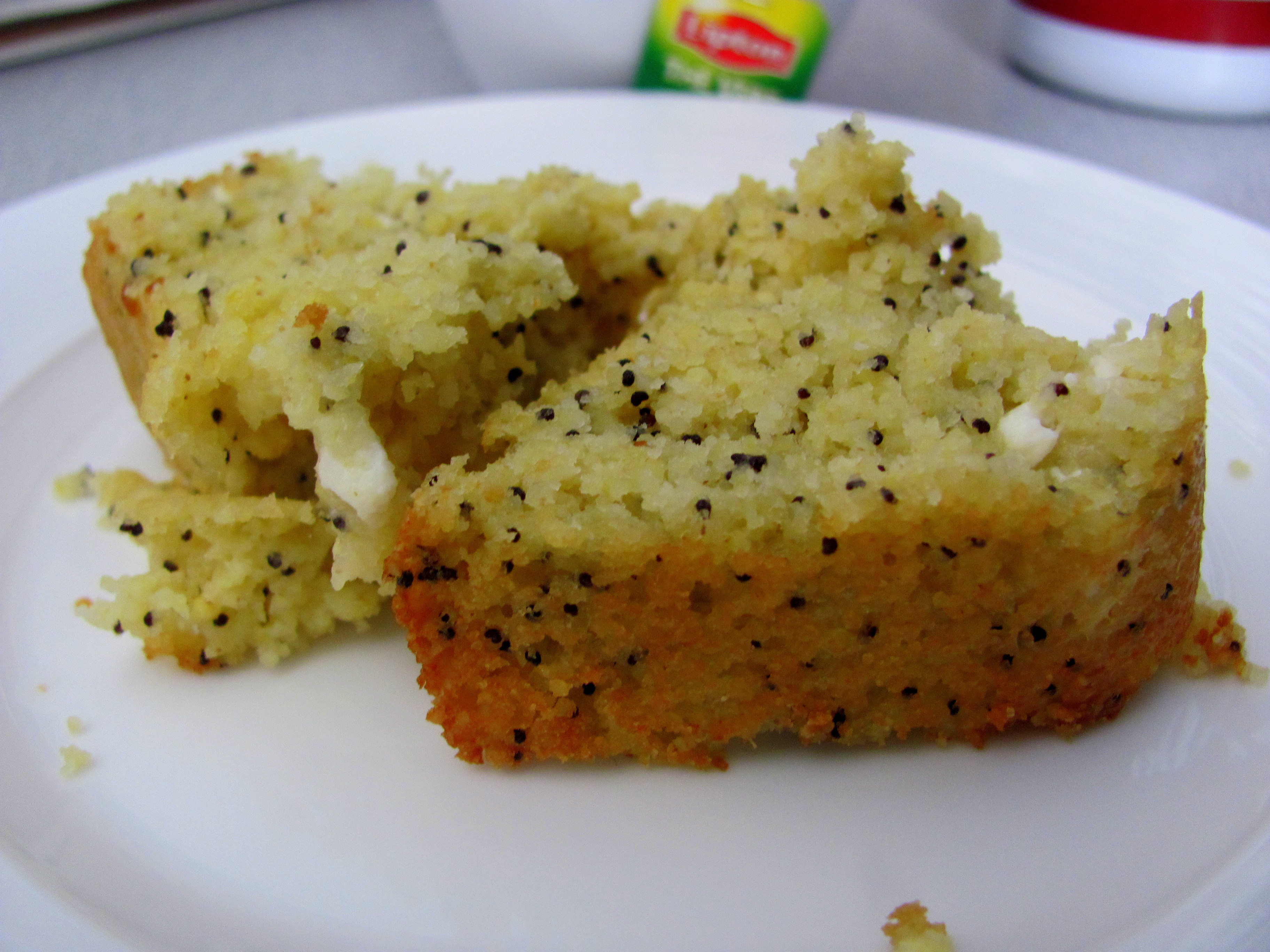
by Dr. Talia Marcheggiani, ND | Mar 28, 2013 | Cooking, Dessert, Elimination Diet, Food, Food Sensitivities, Gluten Free, Nutrition

Everyone loves baked things. They help fuel social gatherings, solo study sessions, go well with tea and coffee. What’s not to love? The problem, however, is that most are laden with sugar, wheat flour, usually processed and virtually all contain milk and eggs, which a growing number of people are developing intolerances to.
Gluten-free goods can be expensive and have the quality of cardboard. So, what’s a health-minded individual to do? No worries, many common recipes can be converted quite easily, depending on your dietary needs and preferences.
(more…)






















